Prized around the world for their texture, rarity and nutty flavor, morels, also known as molly moochers, sponge mushrooms and dry land fish, are one of the most exciting wild mushrooms you can hunt.
Here I'm going to tell you everything I know about them: how to hunt, identify, harvest, clean and cook, as well as some of my favorite recipes I've made over the years for them.
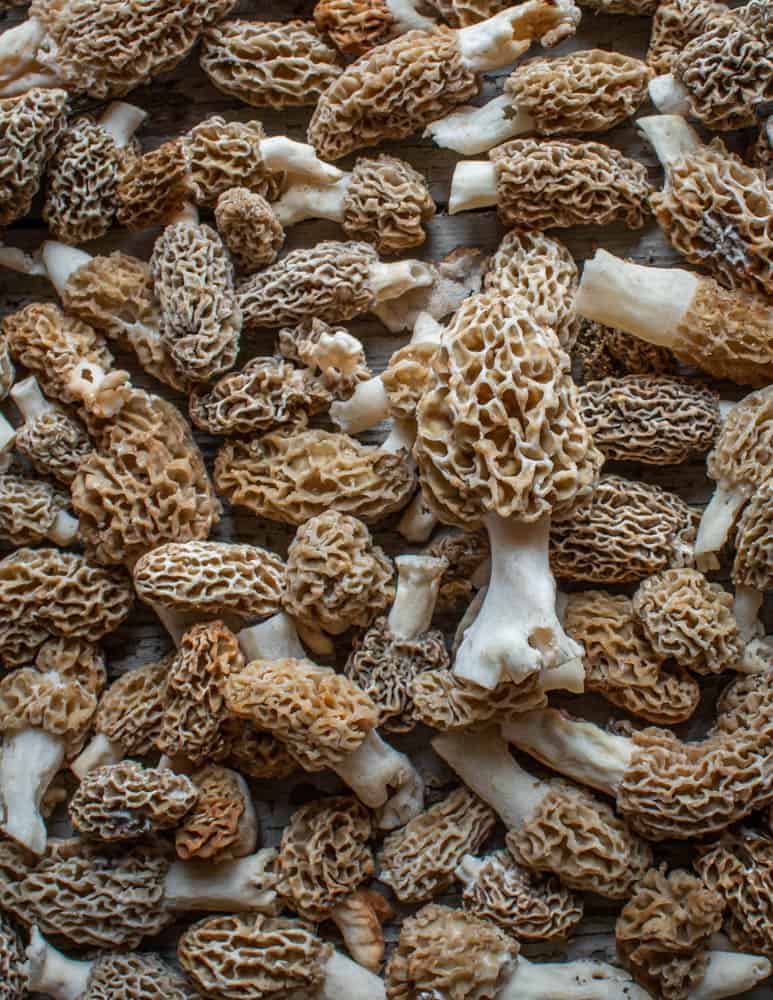
For reference, I'm in Minnesota so my experiences will be the most useful to hunters in the Midwest and United States, but my tips for cooking apply everywhere.
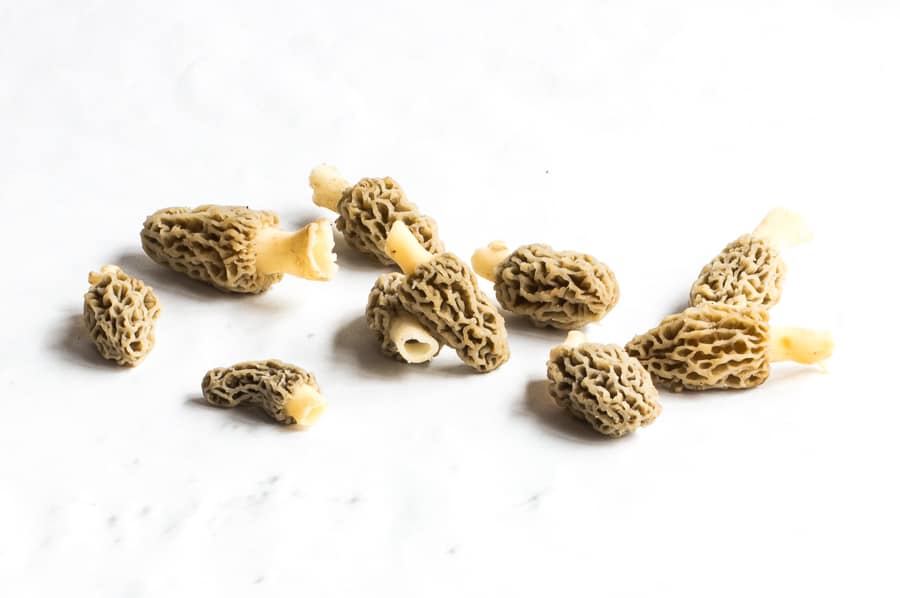
Hunting
There's two big keys for hunting: when, and where.
When
Early spring is the time to look, and there's a number of different ways to tell when you should go out. I usually see mushrooms start in early to mid-May, but every year is different.
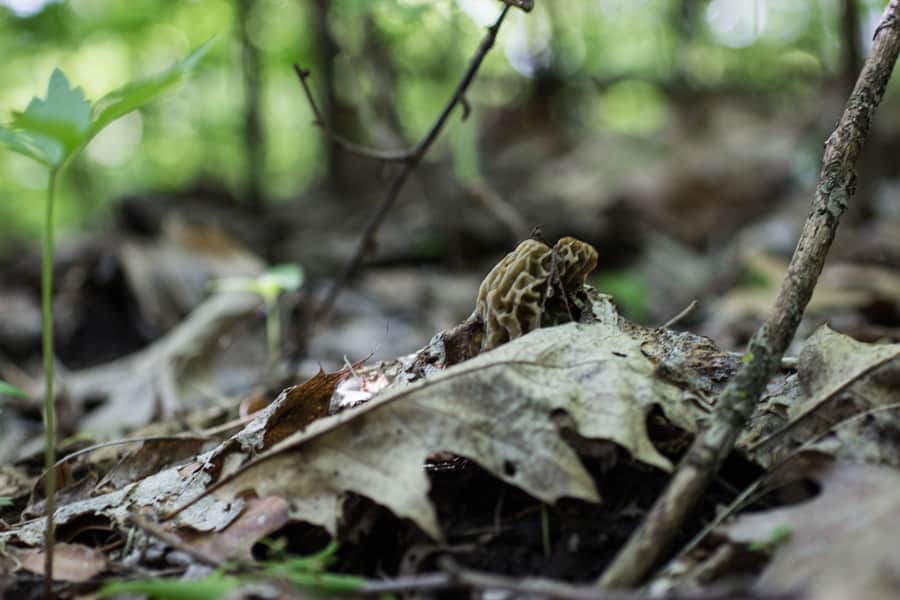
Natural indicators
There's lots of folk-wisdom for when to start looking for mushrooms in the Spring. The most common is when the lilacs bloom, as well as dandelions. I pay attention to both.
Soil temperature
When the ground hits 50 degrees farenhieght it's time to look. Testing the soil temperature is easy-just stick a thermometer into the ground.
Where
Looking for mushrooms growing near dead elms is my best bet, but it may be different depending on where you live. Here's a quick list.
Dead elms
looking for dead and dying trees that have begun to shed their bark, but aren't totally bare. American elm (Ulmus americana) and slippery elm (Ulmus rubra) are what I look for the most. I look for south-facing slopes as they're warmer-a common strategy.
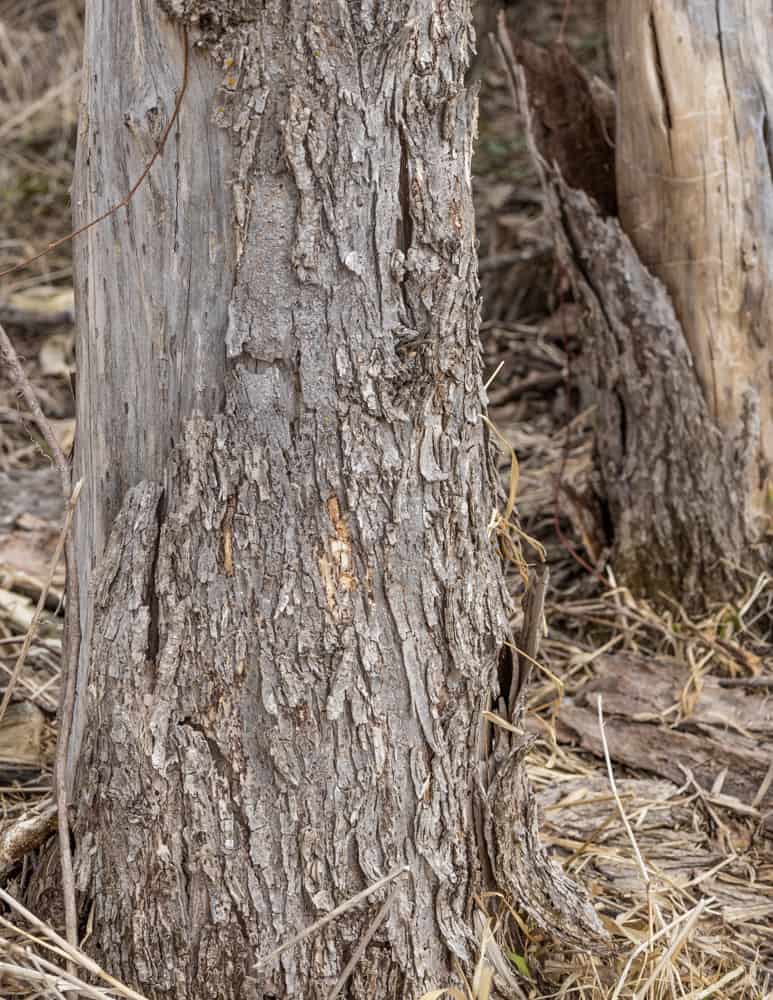
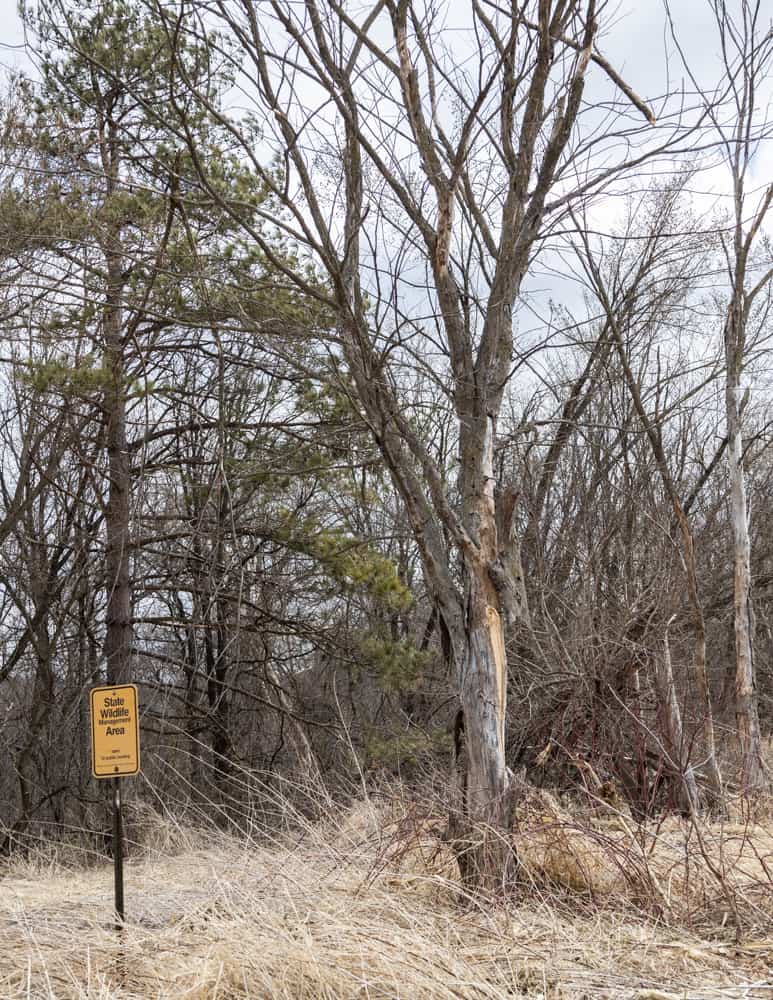
Not every dead elm tree will have mushrooms, but, sometimes all it takes is a single tree to make your whole season. I look for "grandpa trees" or big, old dying elms. The bigger the tree, the more mushrooms it can make.
They grow with lots of other trees too, but it can be region specific. In Indiana you might hunt sycamores. In North Dakota, you might hunt flood plains with moist soil during morel season. Research your region and learn from mushroom hunters in your area.
Other types of trees
- Dying cottonwoods
- Green and white ash trees
- Tulip poplar
- Quaking Aspen (Populus tremuloides)
- Eastern white pine
- American sycamore
- Crabapple
- Bitternut Hickory
- Black cherry
- Old apple orchards (some of these have been contaminated with arsenic)

Disturbed areas
Disturbed areas can be very good. Here's a list of the ones I have experience with.
Logged forest
Logged woods are one of my best spots. I find woods with rich soil that've been logged recently (I look for maple-hardwood mixed woods). After two years, I usually start to see mushrooms and they increase in number for a few years before declining. A¼ acre patch gave me about a hundred each year for 5 years.
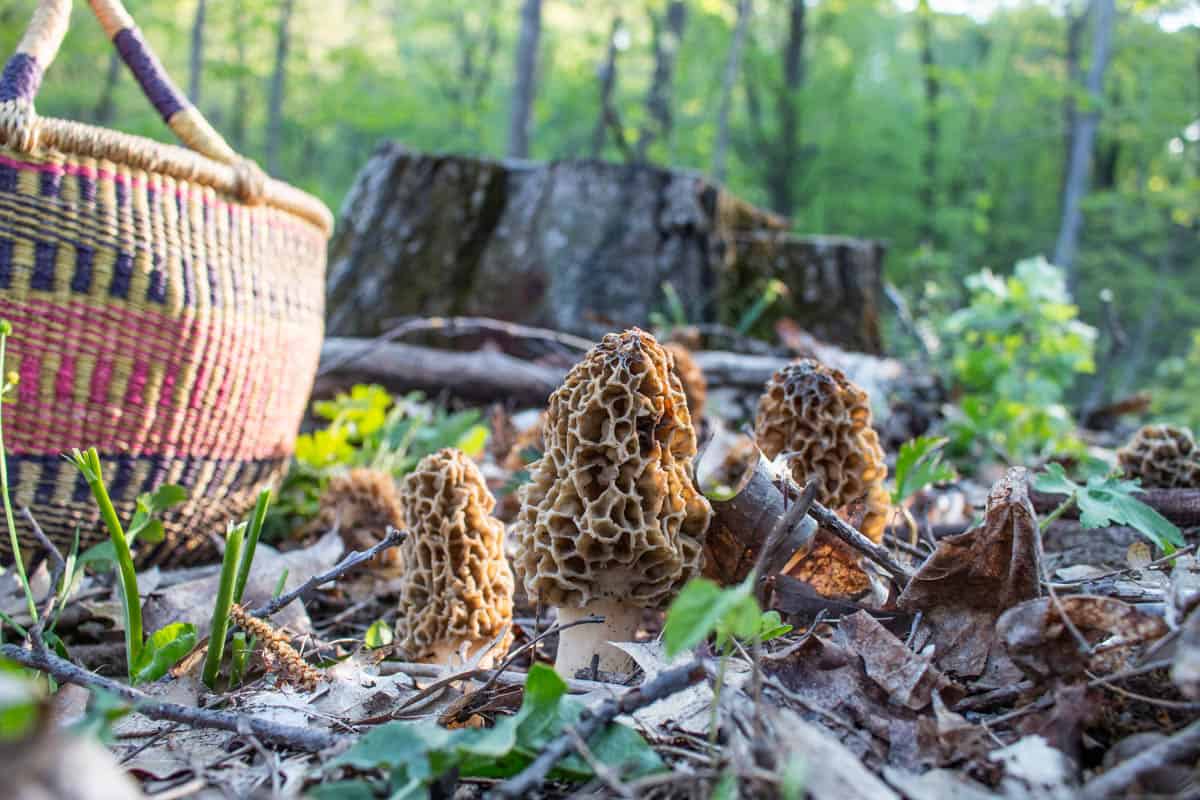
Flooded Areas
Mostly I hear about flooded areas in the Dakotas, where there's flood plain forest and cottonwood trees. Floods in 2011 brought the best haul I've ever seen: over 100 pounds of molly moochers were delivered to the restaurant I was working in at the time.
Burns, Storms Damage, and Forest Fires
A common anecdote about mushroom hunting in Europe is "people used to burn their woods so mushrooms would come". This doesn't refer to people burning down trees, but more likely to them burning woods that had lots of undergrowth. This is the same reaction that makes it possible for people to hunt burn morels in North America every year after forest fires.
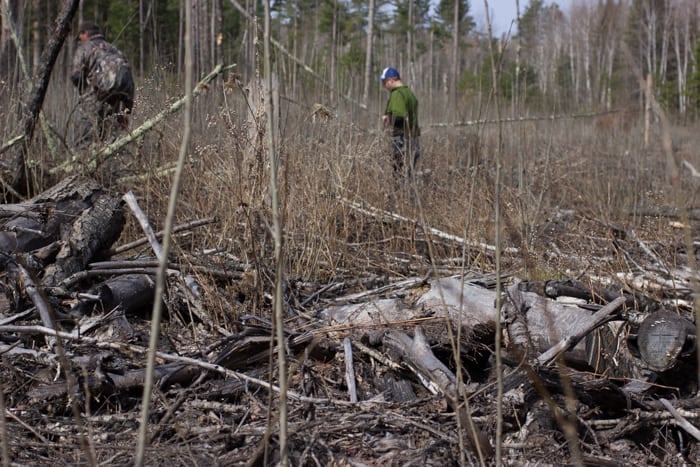
Identification
Identifying morels is pretty easy as far as wild mushrooms go. Here's a few quick tips:
True morels
- Will have pitted caps with a honeycomb structure, there will never be folds, which could be Gyromitra.
- Are always hollow in the center-never filled with white pith or folds
- Will have caps completely connected to their stems
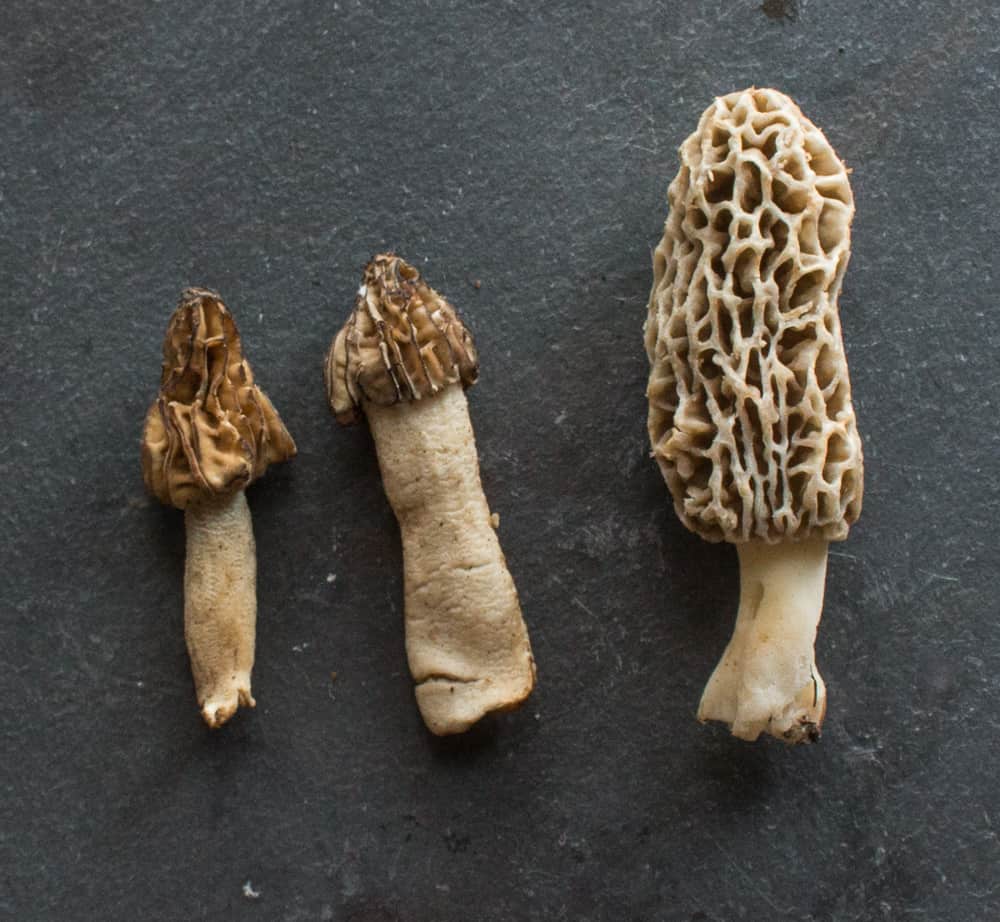
Varieties
We know a lot more about morels than in the past. Plenty of hunters might say they pick "blondes and greys" (these should all Morchella americana), but we now know there's many different species of around the world.
For example, poplar or tulip morels are a specific type of blonde morel that could be either Morchella diminutiva or M. sceptriformis, and the list goes on. Here's ones I have experience harvesting.
Greys
These are the first mushrooms that I see in the spring. They can be small, but they make up for it with a dense structure. Many experienced hunters I've spoken to prefer these over their blonde/yellow cousins.
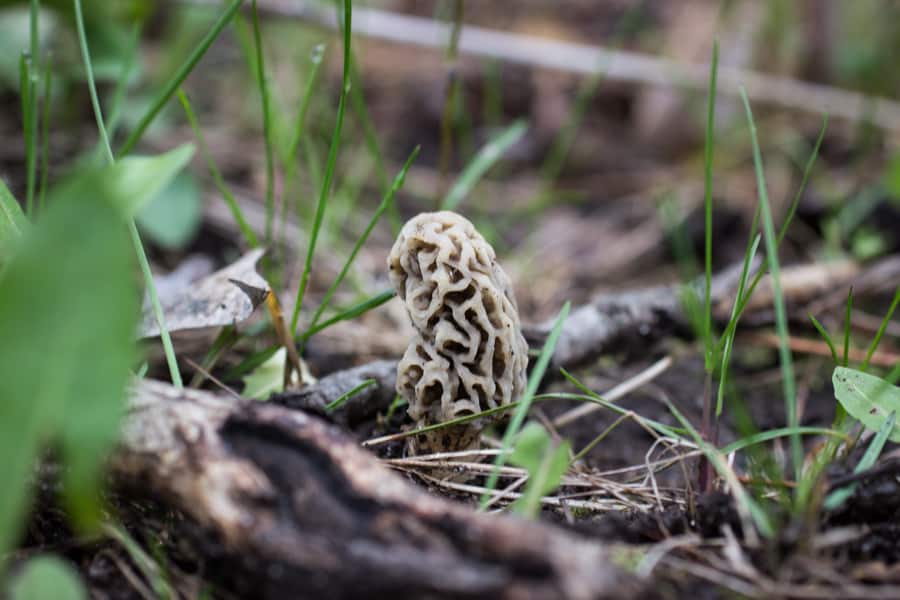
Blonde, Gold, or Yellow
From my experience, these grow to be larger than grey or dark morels. As these grow in size, they tend to get crumbly. The "walls" of yellows are also thinner than grey or green morels. When you see them, check your spots as the season has reached it's peak and will be over soon.

The Bigfoot
You may come across mushrooms late in the early summer that have a giant stem. As I understand it, these were thought of as a separate species (Morchella crassipes) but, according to Michael Kuo, they're probably just blondes that, for whatever reason, get huge.
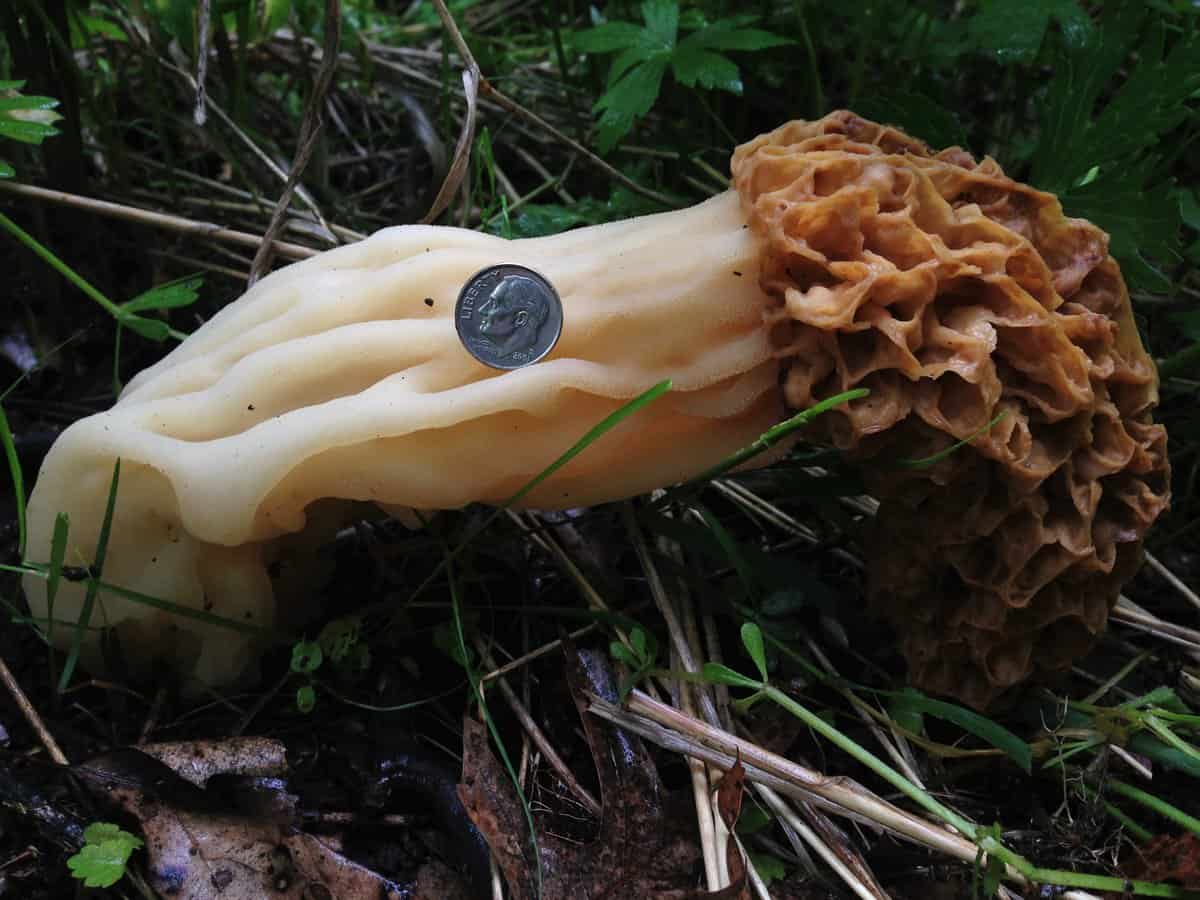
Blacks
Also known as conical morels, blacks are a separate species including Morchella septentrionalis, M. conica, morchella agusticeps, and others. Like all the others, they're great to eat.
These are harvested commercially in the most quantity, due to the large amounts found after forest fires in Pacific Northwest.
Another type grows with stands of young aspen/popple in Northern Minnesota, and they may come a week earlier than greys and blondes. Those ones have a reputation for an-alcohol morel allergy, making some people sick if they consume alcohol with them.
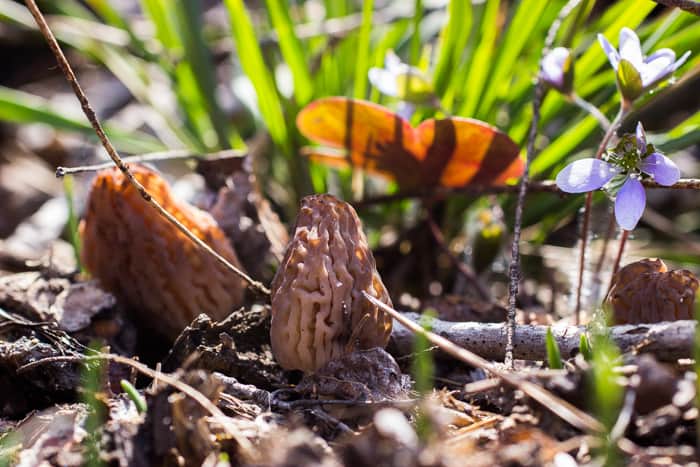
Look-a-Likes: Gyromitra and Verpa
There are a few different species that can be confused with true morels, but mostly when you hear the words "false or fake morel" it's going to refer to either gyromitras or verpas. All of these wild mushrooms, including every species of morel, can make people very sick if undercooked or eaten raw.
All of those mushrooms are traditional foods. But, Gyromitra are much more dangerous than morels if not handled properly, and they account for many wild mushroom poisonings every year during the season when both mushrooms appear. If you're new to mushroom hunting, it's probably best to leave them in the woods.
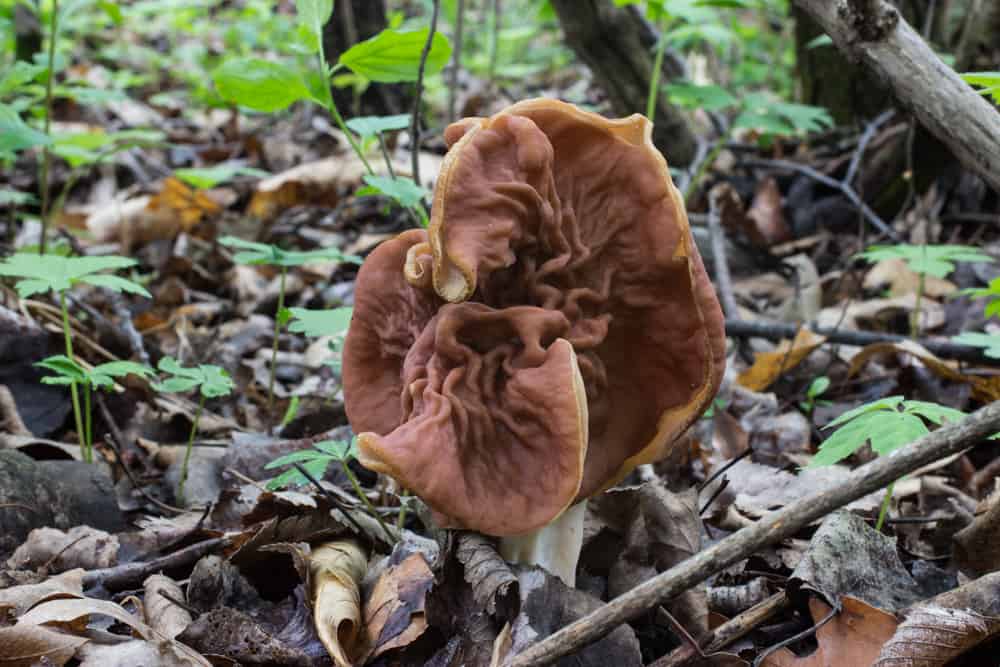
Half-frees
Half-free morels (Morchella punctipes and others) are in the genus morchella so they're a real morel. These are hollow on the inside but the cap is only half-attached to the stem. They're ok, but brittle. These are often called early morels.

Harvesting
The best mushrooms will be attractive looking, fresh and sturdy, without blemishes but I know people who will take old, buggy, discolored, wet or past-prime specimens. Sometimes I harvest older mushrooms too but I always dry them. Eating old mushrooms can make you sick.
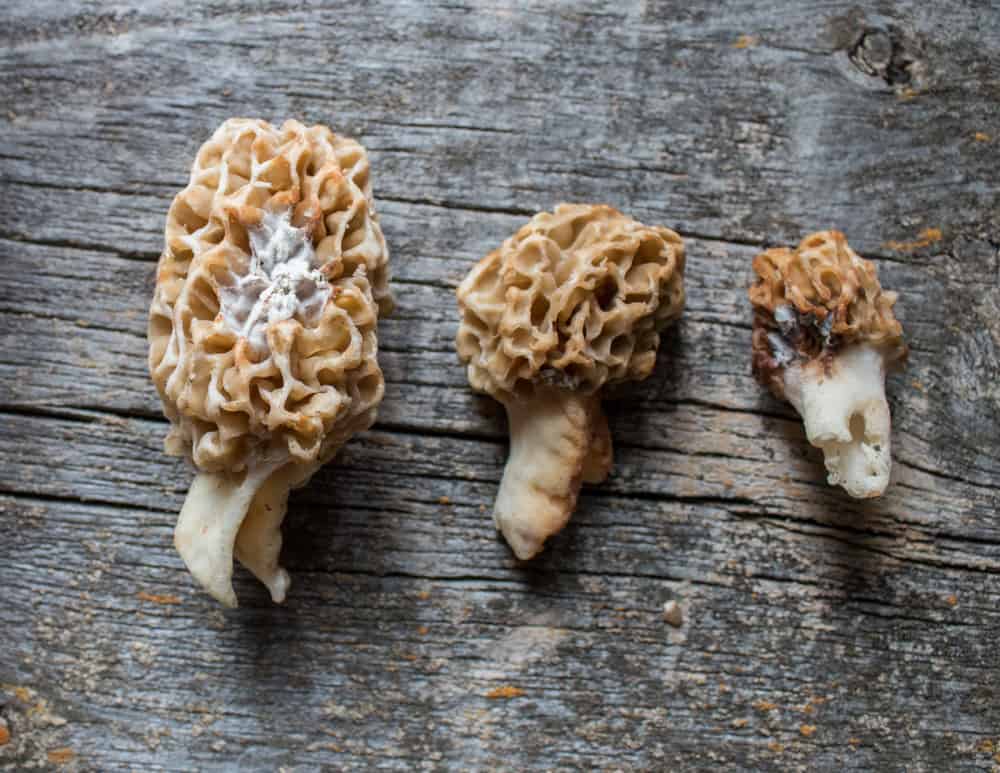
Cut vs Pull
At the end of the day, it doesn't matter. I always cut the mushrooms from the ground and clean them before putting in the basket as it only takes one dirty mushroom to ruin a meal with grit.
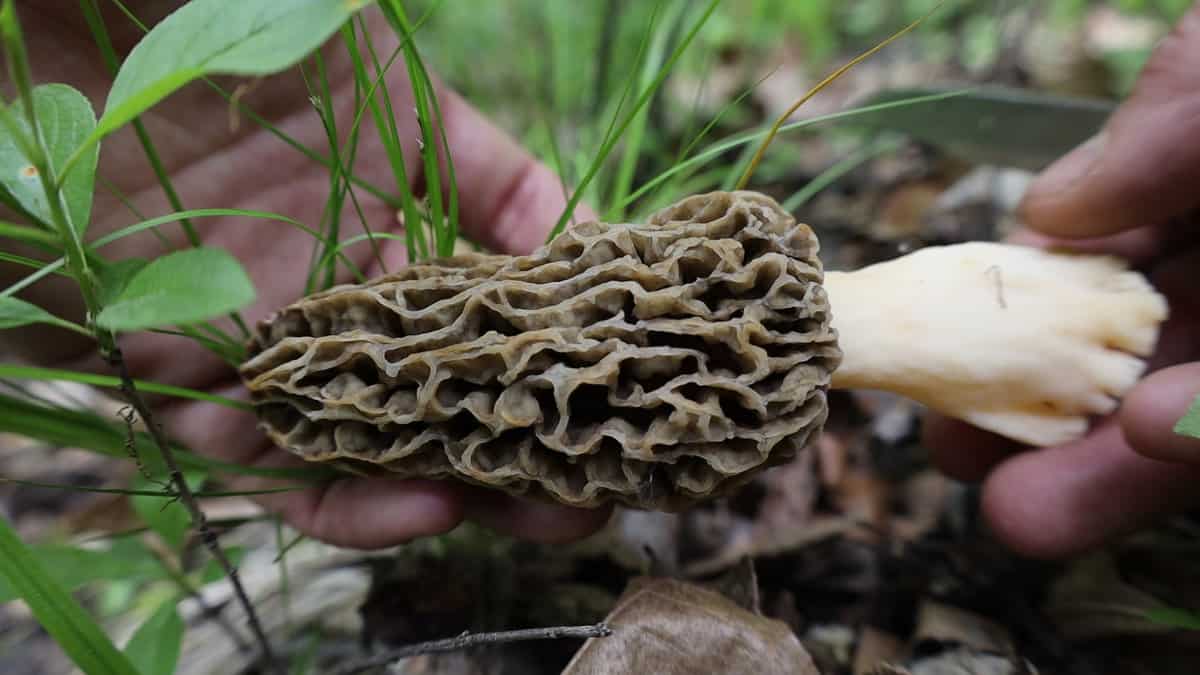
Spore bags
Some claim you have to put mushrooms into a mesh bag to spread spores. This isn't true. I can't stand mesh bags as they don't support the mushrooms, making them rub against each other, breaking them apart into crumbles. As the bags are see-through, they also give you away to hunters on state parks and public land. Plastic bags are no good either.
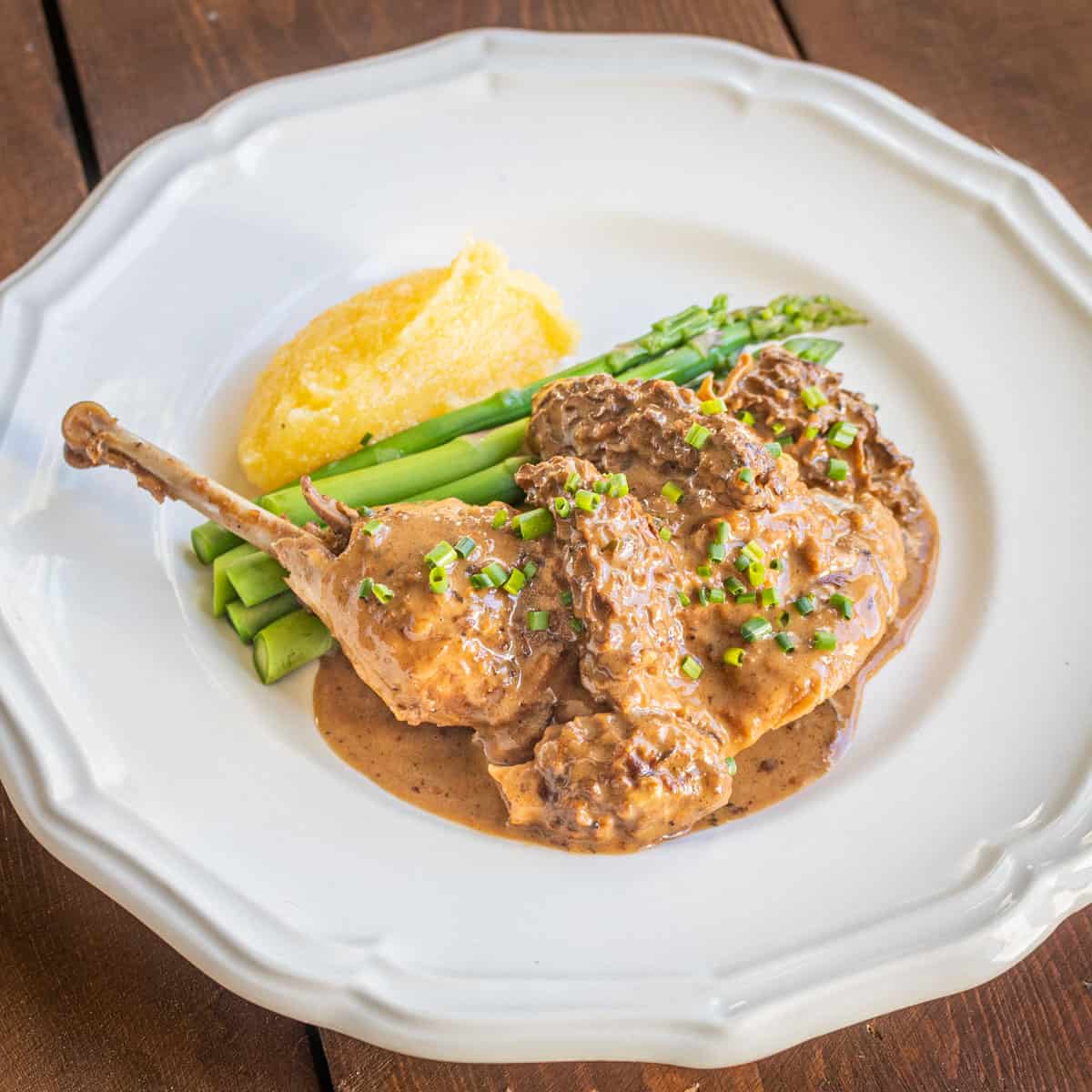
Cooking
Now the most fun part. These are some of the best eating mushrooms around, but there's a few things to know:
- Never eat morels raw
- Large mushrooms I may cut into halves or dehydrate
- Browning will improve the flavor
- If you find perfect young mushrooms, they can be cooked whole
- A morel allergy isn't uncommon-even if they're cooked through
Should I soak morels in salt water to remove bugs?
Never. Soaking morels in salt water will ruin them, but some people still do it. I don't care what your grandpappy said-it's wrong.
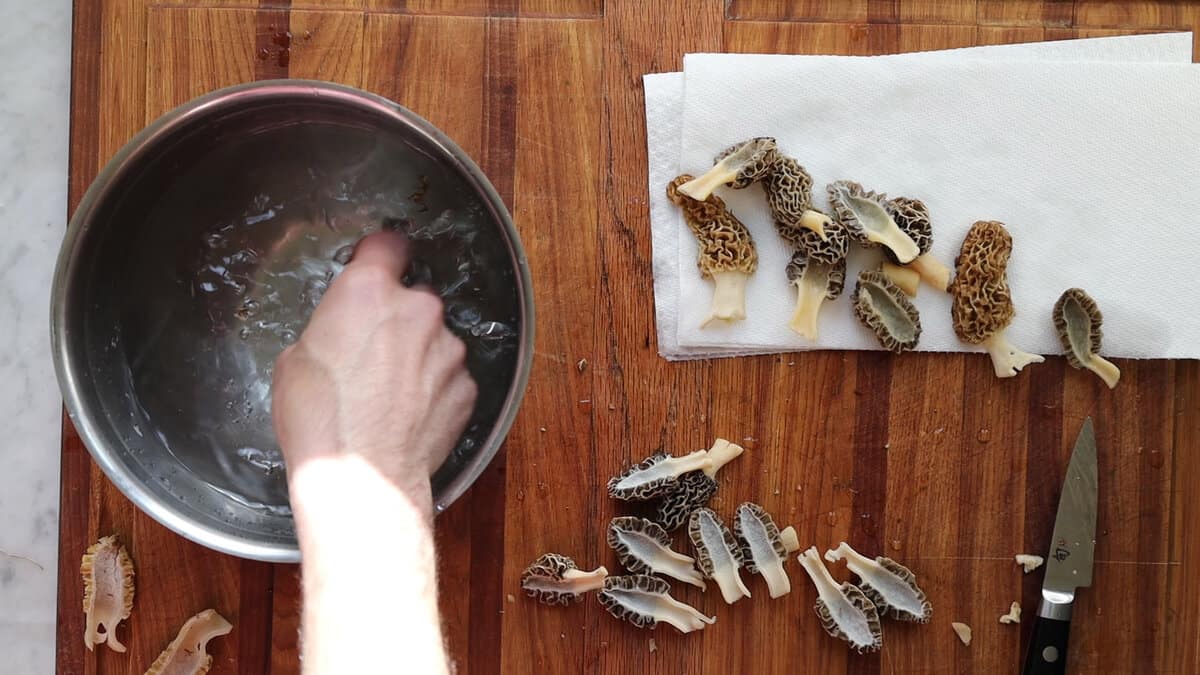
The salt draws out natural water from inside the mushroom. When you remove them, they'll be flaccid and limp. Hot water is no good either. If your mushrooms have worms in them, dry them.
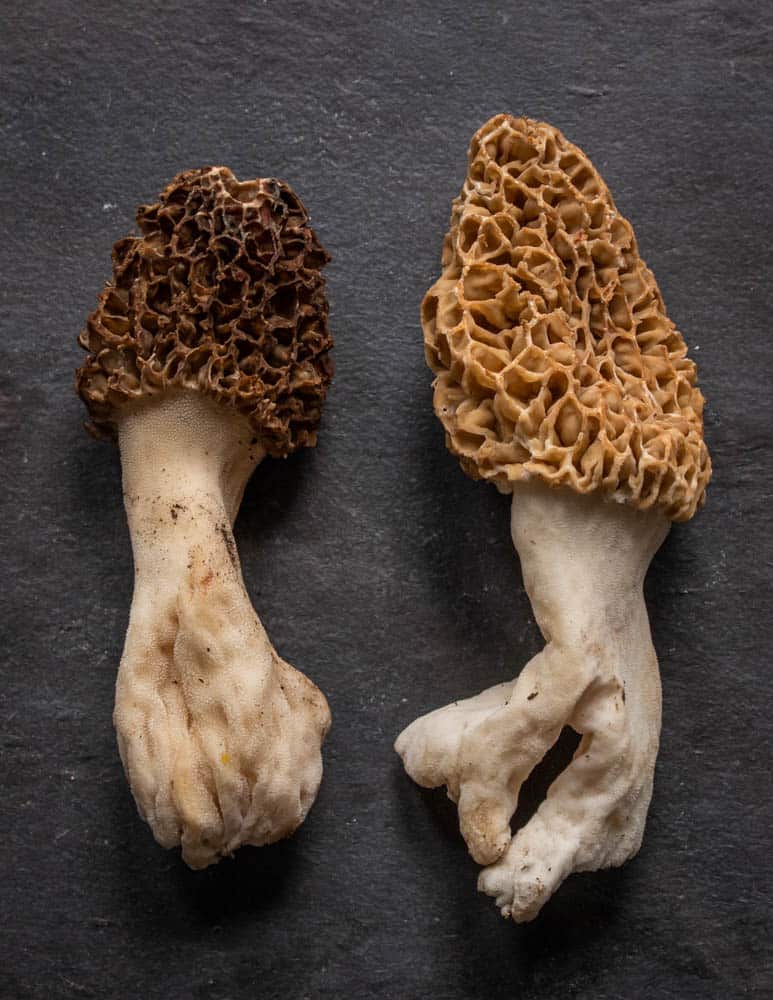
Drying
These are one of the best mushrooms you can dry. I usually dry old or large mushrooms. To dry them, I put the mushrooms in a dehydrator at 145F and leave overnight until crisp. They'll keep for years after dehydrating.
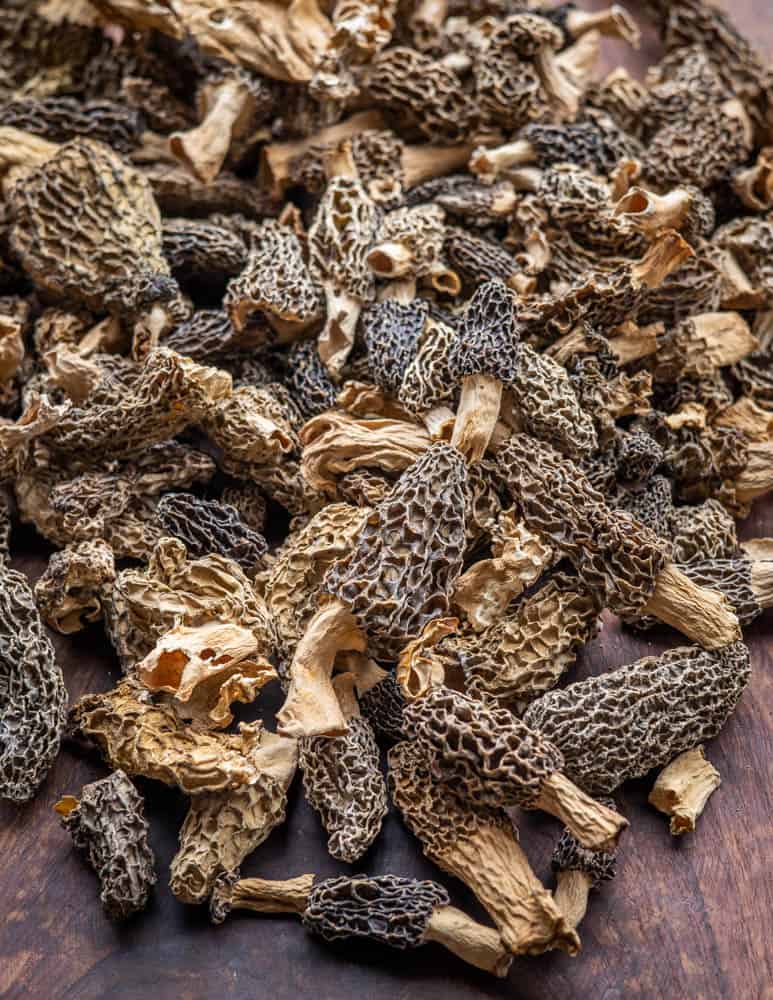
After the mushrooms are dried, they can be reconstituted by covering with cold water, stock or milk. Afterword they're plumped up, they need to be swished in their liquid to remove dirt.
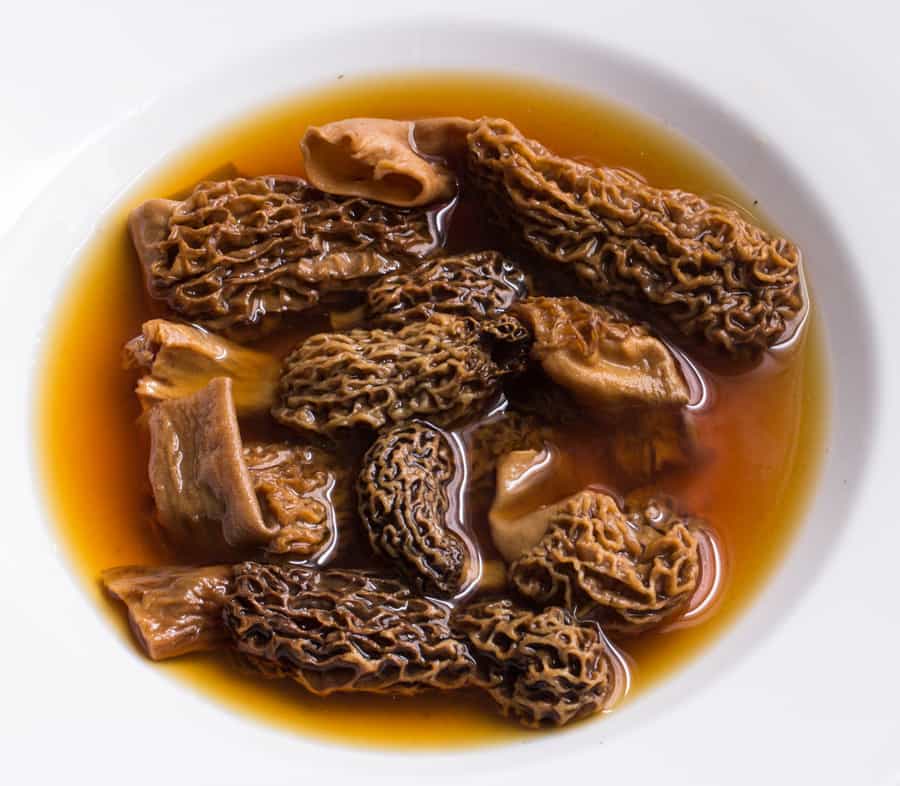
After dirt is removed, just strain the liquid and recombine it with the mushrooms, then add them to whatever you like.
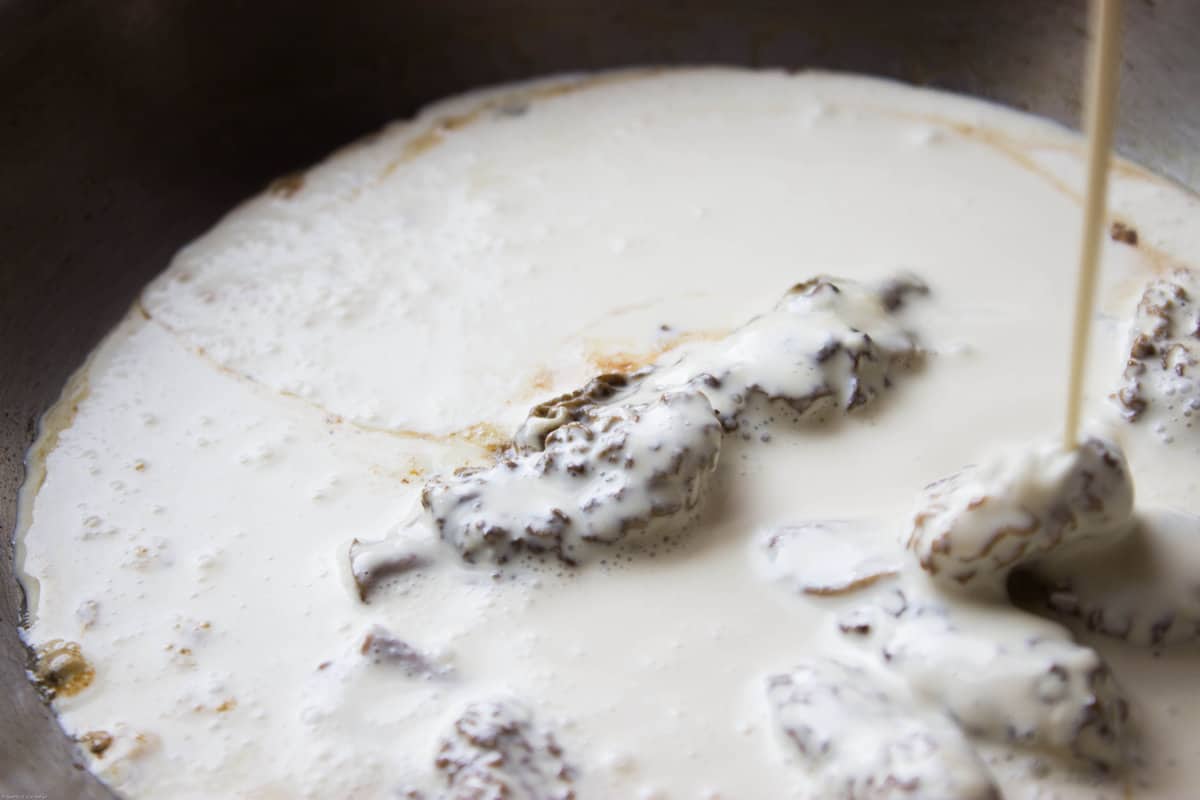
How to clean
I clean my mushrooms with water, but I don't soak them. Below is a video outlining the process I taught to the cooks in my restaurants and have used at home since I started.
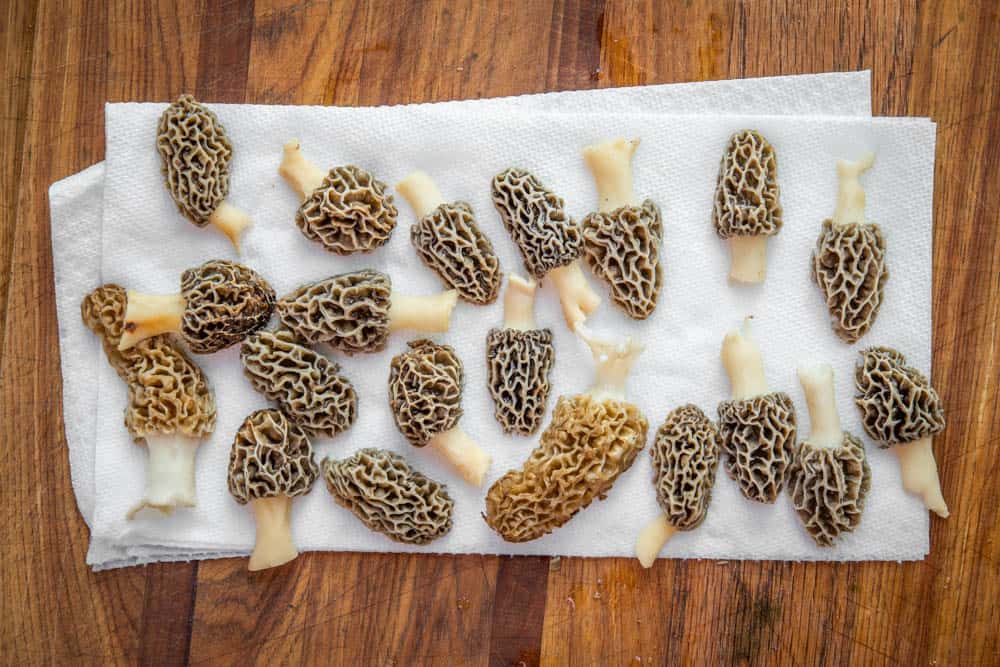
I swish the mushrooms in cold water to remove grit, then I put them on paper towels to drain. If the mushrooms are from sandy soil or it's rained recently, I'll dehydrate them as they're hard to clean.
Cleaning Morel Mushrooms
Video
French morilles a la creme, or creamy mushrooms served with a toasted baguette is one of my favorites. You'll find more recipes in the link below.
Morel Recipes
Related
35 Essential Wild Mushrooms Every Forager Should Know

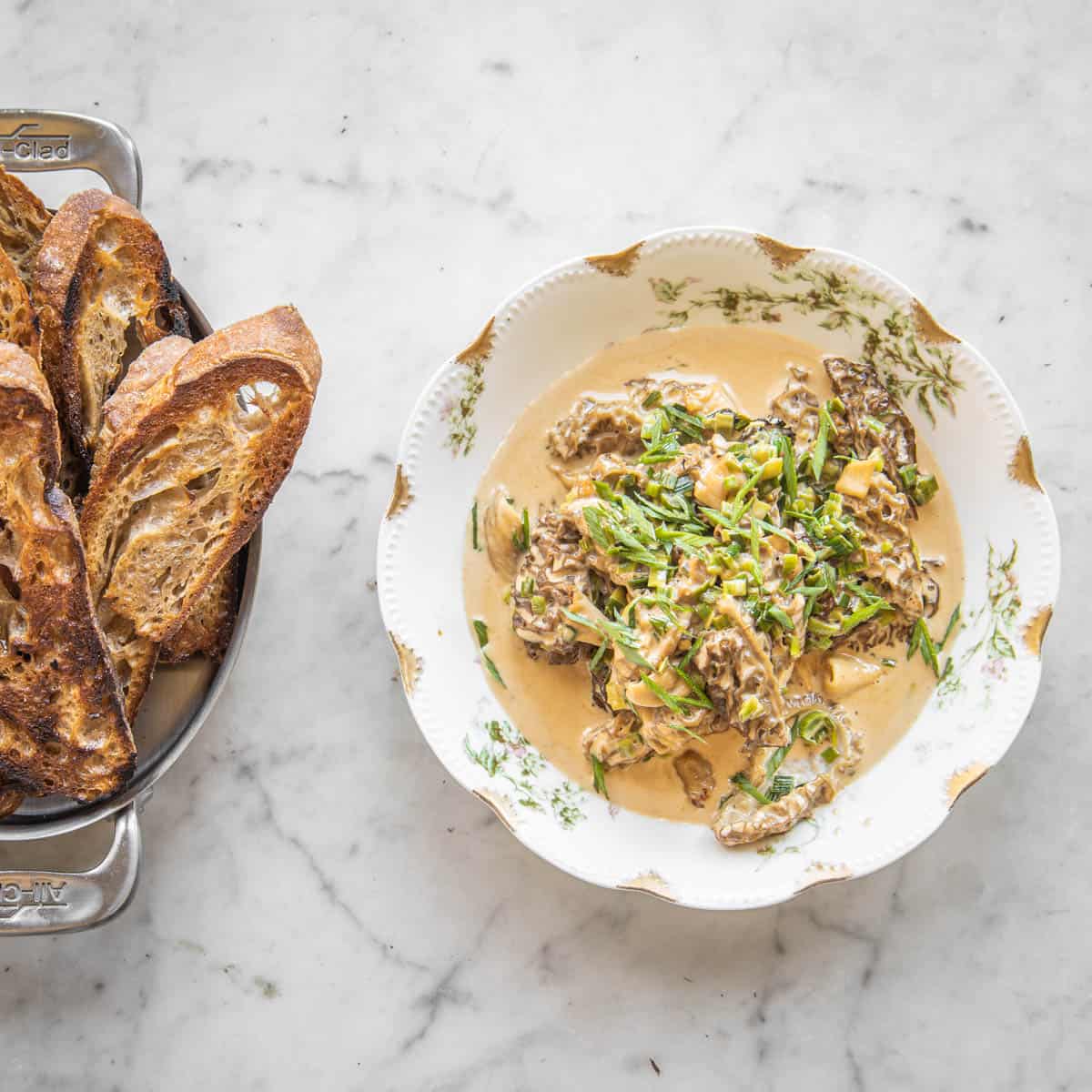
Keith Cross
first timer with morels...just want to a simple method to cook them to serve with stuffed shells...garlic and olive oil, or would that be a waste? I have two blondes...hoping to find more here in New England
Alan Bergo
Just fry them up and eat as-is if you only have two.
Mark
so, you mentioned not using mesh bags....if you don't use mesh, and don't use plastic, what do you recommend? I've always used mesh but am always learnin...
Alan Bergo
Hey Mark. I use one like this. You have to order them from Italy.
Lisa
If I find some wild morels and want to eat them the next day, what is best method of storage?
Alan Bergo
Rinse or swish them in cold water to remove dirt or debris since it will stick if they're allowed to dry out, then keep in a zip top bag with paper towels that will help keep in moisture.
Brian
I sometimes order dehydrated morels when I cannot hunt fresh. In order to rehydrate they recommend to soak them, I know this is not the preferred way to consume such a wonderful mushroom but this is the only way sometimes for me.
Do you have any advice on how to work with dehydrated morels? Thanks in advance.
Joe
I don't advise soaking them personally. The texture is completely different and the spores seep put staining the morel as well. I just take the dried morel and add it directly to a recipe. Diced and added to a sauce is very good. They pair well with red sauce from my experience. I have a jar of diced morels just for things like this.
Alan Bergo
Yes but you have to make sure the mushrooms are very clean. One mushroom growing in a sandy patch, or a mushroom that was splashed by dirt in the rain can ruin a whole dish.
Joe
That's very true. I suppose I was only considering the ones I pick, process and dry myself. If you buy them you never know if they were cleaned to your specifications.
If you ever had clams, one can attest how sand can ruin a meal.
Alan Bergo
Lots of people cook with dried morels, and they're one of the best dried mushrooms. Dried morels you buy at a store are typically pretty clean, so, some people add them directly to recipes without soaking. This can work, but there can occasionally be some grit if the mushrooms aren't perfectly clean before they're dried, which is why packages of mushrooms will instruct you to soak many of them. Wild mushrooms I harvest myself I almost always soak for a bit in water to cover, stirring them around a few times during the process to try and remove any grit. But, some species are easier to clean than others-lobster mushrooms are a good example as they can be trimmed more easily, so I might use them as a seasoning ground to a powder since there's no worrying about crunchy dirt getting into the food.
Sally
I let mine soak in warm salt water ... only ment to for 4 mins but left house and it turned into 4 hours! Ahhh
Kinda floppy now
Still okay to cook and eat?
Alan Bergo
Morels should never be soaked in water, or water with salt. Salted water will "cook" your mushrooms in a way, and make them a floppy mess. You can still cook them and eat, just make sure to cook them thoroughly.
Shawn W
Informative post, thank you!
One question though: To make a compound butter using fresh black morels, do I need to steep them in hot/boiling water first, so as to not get sick from consuming the mushrooms raw once they’ve been pulverized into the compound butter?
Cheers!
Alan Bergo
You would always cook mushrooms to make a compound butter, so raw mushroom consumption is a non-issue here. For a template for making fresh mushroom butter, see my recipe here: https://foragerchef.com/fresh-porcini-butter/
Personally I prefer dried morels for butter since you get to use their liquid, see that recipe here: https://foragerchef.com/dried-morel-butter/
A
Joe Bower
I dried mine and they turned nearly black. This was before I read not to soak them in salt water. I have been misinformed my whole life apparently. Are they still ok and do you feel this was from soaking too long and or using salt water. They were hung dry on mesh.
Alan Bergo
They'll be fine, not great, but fine. Boil them or cook in broth to sterilize.
Peggy Drury
What if wild morels are turning brown at the stem when u puck the are they still good
Alan Bergo
They can be, make sure they're not soft and gooey at all. If they're fresh and firm, they're good. You can trim brown parts off too.
Maybeth
So if not soak morels, how do i clean them?
Alan Bergo
Swish in cold water, then dry on towels. I have a video on you tube.
Barbara
Do you use this method for farm and wild morels?
Alan Bergo
I only harvest wild morels.